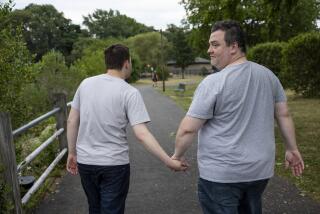GETTING RELIEF
Bob Murphy has a magnetic personality.
Also a magnetic back, wrist, neck and knee.
And at night, his knuckles.
Jim Colbert might have been just another middle-aged man with a prostate problem but for magnet therapy, which has become as much a part of senior golf as the extra utility wood most of the players carry in their bags instead of three wedges.
The metal of choice these days never hits a ball, and it isn’t the Trimetal wood proffered by Orlimar, which has crept into more senior bags than any other, according to the Darrell Survey.
No, it’s a magnet about the size of a dime. Or make that magnets, because when Murphy tapes up these days, he’s applying them to his elbow, knee and the back of his neck with a quick “X” of surgical tape.
At night, he tapes the magnets, called Neodots, to his knuckles to ward off the arthritis that cut his PGA Tour career short and put him in a television booth as an analyst during a time when he could have been earning money on the course.
“I would guess 65 to 70% of the guys out here are using magnets now,” said Colbert, who has gone through more career stages than Wells Fargo, each time being halted by a back problem first diagnosed when he was 16.
He won eight times on the PGA Tour but had long lapses between victories because of his back.
Colbert, 57, had been a quick success on the Senior PGA Tour, with three wins in his first year but labored shortly thereafter, still winning occasionally but wondering how long his body would take it.
“I was taking 20 aspirin a day at one time,” he said at Riviera Country Club, site of this week’s U.S. Senior Open.
“Then I was taking 12-13 Advil.”
And then he was introduced to magnets in 1995 by Mickey Gallagher, an assistant pro at PGA National Golf Club in Palm Beach, Fla.
Colbert began wearing a belt with three half-dollar sized magnets against his lower back and also wearing a bracelet, in which six magnets are linked with gold and stainless steel.
He also began sleeping on a bed with 350 magnets in it.
“Weighs about eight pounds,” he said of the magnet pad, which he frequently carries on the road.
And he was swinging pain free.
“I just had to watch myself when I walked near the refrigerator,” he says.
Soon Colbert was preaching the gospel of magnet therapy, especially to Murphy, who now talks of pars, birdies, eagles and manufacturers’ gause rates, which measure the strength of the magnet.
The Neodots sell at two for $49.
Both golfers bought stock in Magnetherapy Inc., of Riviera Beach, Fla., manufacturer of the magnets they use.
“When Dan Marino hurt his ankle, I called him and talked with him about magnets, and he tried them on the ankle,” said Murphy, a Floridian and a Dolphin fan. “He was supposed to be out eight weeks, but he was back playing in three.
“And he’s bought stock in the company too.”
The Tectonic Magnets--that’s the name of the Magnetherapy Inc. product--brochure advertises clearly “Tectonic Magnets are not being sold as medical devices,” and Ralph Simpson, who works with golfers through the fitness centers that follow the tours, buys that, to a point.
But he also buys magnets.
“I don’t have a real good scientific clue what it does,” says Simpson. “I just know that there is a lot of anecdotal history.”
He is part of it.
“I blew out a disk in my back a year ago, and I have arthritis,” Simpson says. “I had a car accident. I put on magnets, and within the first 15 minutes I felt about 85% better.
“I’ve bought a couple of books on magnets and learned some of the basic things about them.”
One thing he learned is that they have been around for years.
“Trainers have used them to help heal horses,” Simpson says. “Now, people have said that magnets are just placebos, but the horses aren’t limping and they don’t know anything about placebos.”
Something was happening.
Colbert says that magnets induce blood flow to the areas of which they are applied, and Murphy agrees.
“I know that if there is a spot that hurts and I put a magnet on it, the spot moves,” Murphy says.
Mostly, the magnets are applied to joints, which is where arthritis affects people.
“They don’t seem to be as effective in soft-tissue injuries,” Simpson says.
And most players who are using them are applying them to backs torqued millions of times by swinging a golf club.
It’s a growth business--and apparently a big-profit one.
“I just heard that it costs about $1 to produce one of those [bigger] magnets for the back,” Simpson says. “They sell for $60 or $70.”
Actually for $93, but who cares? And who really cares if there is no more basis in science for their effect than the copper bracelets so many golfers have worn in an attempt to deal with arthritis.
If a golfer tapes on a magnet and shoots 68, then you can bet the magnet is going on the next day.
And if he then shoots 78?
The magnet is probably going to be taped somewhere else.
More to Read
Go beyond the scoreboard
Get the latest on L.A.'s teams in the daily Sports Report newsletter.
You may occasionally receive promotional content from the Los Angeles Times.










